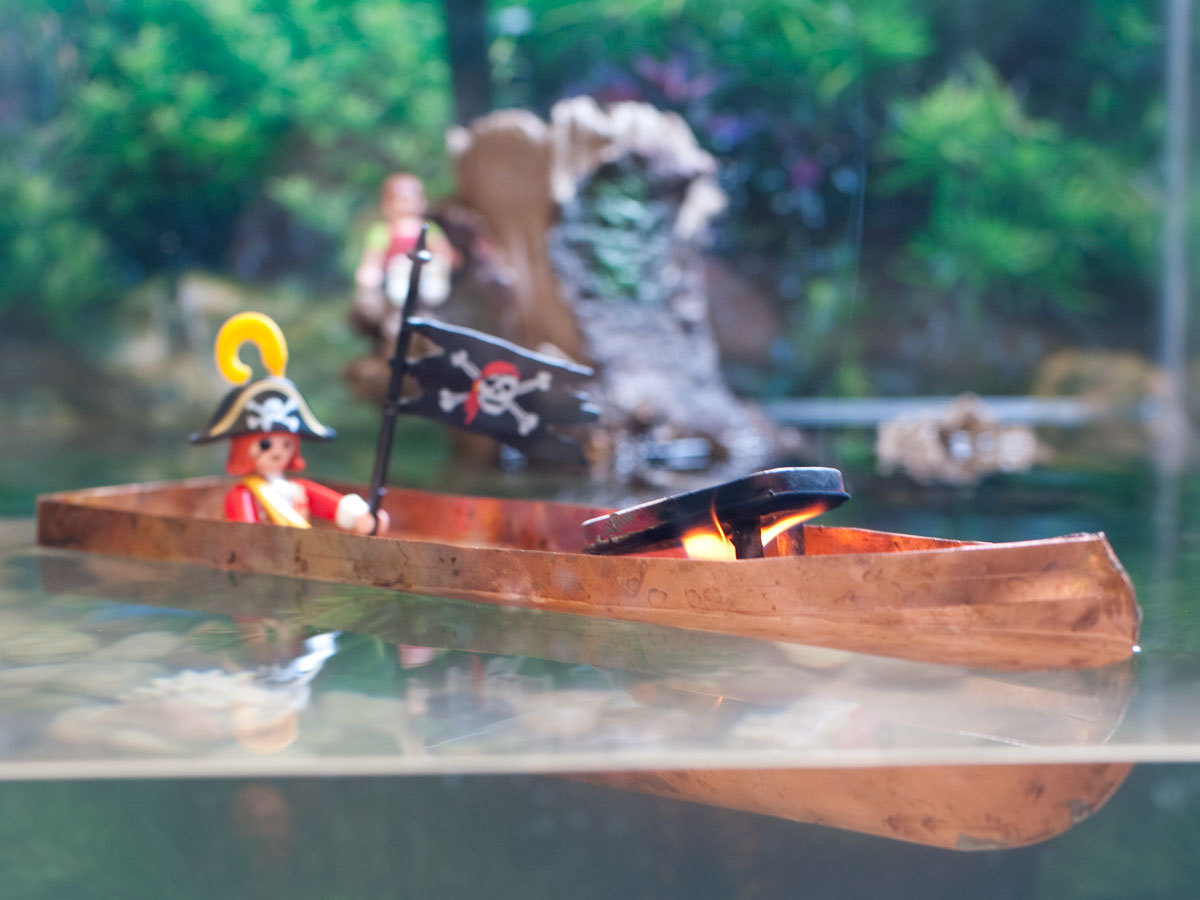When you picture a steam engine, you likely imagine a giant cast-iron contraption festooned with knobs, valves, gauges, linkages, and wheels. This steam-powered toy boat has no moving parts and needs only a flame and the surrounding water to zip around and make its distinctively happy sound.
My interest in pop-pop boats began when I saw Hayao Miyazaki’s stunning children’s movie, Ponyo. In it, Ponyo and her friend Sosuke sail a scaled-up version of Sosuke’s pop-pop boat around a flooded city. The boat requires only a candle and some water to run.
Once commonplace, these toys have given way to battery-powered plastic. But the pop-pop boat’s underlying principle is compellingly simple and provides the home tinker with endless room for futzing and improvement.
Pedigree and Principles
First patented in 1891, pop-pop boats use a candle or other flame to heat water in a small boiler connected to one or more pipes. The pipes run down and back into the water behind the boat; when the water in the boiler turns to steam, it pushes jets of water backward out of the pipes, propelling the boat forward.
The moving water’s momentum makes the steam “piston” overshoot its equilibrium, so the steam quickly cools, contracts, and condenses back into water. This draws cool water back up through the pipes and into the boiler, where the cycle starts again. Because the water sucking back into the tube is incoherent, coming in from all directions, rather than in a directed jet, this intake cycle doesn’t pull the boat backward. (By analogy, you can easily use a straw to blow a small ball of wadded-up paper across a table, but you can’t suck it up the straw unless you’re right on top of it.)
You can think of a pop-pop boat as a reciprocating, steam-driven water hammer, an engine with pistons made of water, or an external combustion pulsejet (see MAKE Volume 05, page 102, and Jam Jar Jet).
A later design (patented in 1916) added a “sound producer” to the boiler, a slightly convex sheet-metal diaphragm that flexes with the expanding and contracting steam. The resulting rattle makes the motor sound more mechanically complex than it actually is, and gives the pop-pop boat its name.
Traditionally these boilers are built with a thin brass diaphragm crimped and soldered into place. Thin-enough brass stock can be hard to find, so I’ve come up with a design that uses castoff packaging instead: an Altoid Smalls tin boiler with an aluminum can diaphragm. Since aluminum can’t easily be soldered, I’ve substituted J-B Weld epoxy, which is up to the task: its maximum operating temperature of 500°F exceeds the melting point of most soft solders, and its tensile strength is comparable.
Ponyo notwithstanding, this type of engine does not scale up to life-sized boats (nor, for that matter, are there sea wizards or magic talking fish). Nonetheless, there’s an undeniable pleasure in a home-built toy that scoots around on its own and has no use for batteries — except, perhaps, as ballast.


